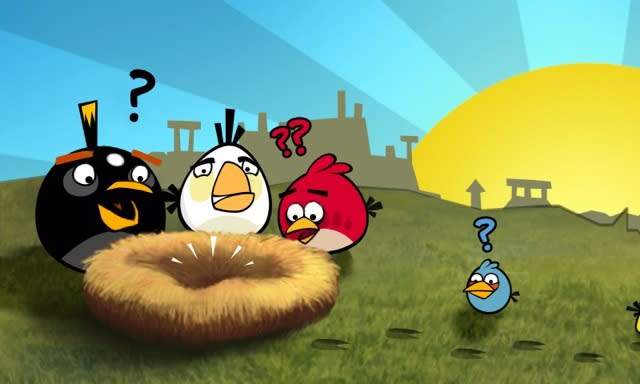Rovio’s games are losing revenue generation power rapidly
The most famous mobile app franchise in the world has generated more than 1 billion downloads over the past three years — yet it currently has no games in the United States top 50 revenue chart for either the iPhone or iPad. On Wednesday, Angry Birds Star Wars dropped to No. 66 on the App Annie iPhone app revenue chart. This happened just three months after the game launched with massive download volumes and an avalanche of media coverage. Angry Birds Star Wars spent just two months in the top 20 iPhone revenue chart despite generating 50 million downloads in just 35 days.
[More from BGR: Every 10 years, a cataclysm kills off most phone brands – the next one is almost here]
The original Angry Birds hit the top 5 of the iPhone revenue chart in April 2010. It spent 22 months in the top 20 iPhone revenue chart, as opposed to the two months that its Star Wars sequel managed. The application market is growing strongly and the revenue generation power of top games increases every year. Yet it’s hard to believe that the No. 66 position on the iPhone revenue chart in February 2013 does not mean lower revenue than the No. 1 position Angry Birds held in February 2011.
[More from BGR: New purported Galaxy S IV details emerge]
A look at other Rovio games reflects the same pattern of steady revenue generation deterioration. Bad Piggies held onto a top 20 revenue position for five weeks on the U.S. iPhone chart last autumn. It has now slipped out of top 100.
Of course, Rovio is no longer mainly an app company. The company probably gets more than 50% of its revenue now from licensing and franchising contracts and this stream is growing rapidly. Sources in Helsinki indicate that the percentage may already be more than 60%, or even 70%. Nevertheless, it is striking to see that the download king of the application world is losing app sales generation power this quickly. It is quite possible that Rovio is simply opting to focus on lucrative licensing opportunities with strong partners like Mattel, Hot Topic and Walmart. But it’s hard to avoid the feeling that the company is missing out in a big way by allowing the explosively growing in-app revenue market to slip from its grasp.
Rovio’s fading presence in the iOS revenue charts demonstrates how rapidly the iOS ecosystem is evolving. This week, Minecraft is the only paid iPhone app that has managed to break into top 40 iPhone revenue chart. The other 39 apps are free and their designers have had to devise ingenious in-app item purchase strategies in order to squeeze dollars from their users. Paid apps like the Angry Birds franchise have relied on download fees and may have lacked the drive to develop optimal monetization formulas.
Rovio is seeking to become the next Disney. Its grand animation, theme park, fashion, education and beverage strategies are soaringly ambitious and have already paid off handsomely. Yet it could be tricky to position Rovio for a likely IPO before the company finds a way to recapture the app revenue generation power it possessed in 2010 and 2011. As Rovio’s games have faded rapidly in American revenue charts over the past two months, it has stared at an ironic, down-home reminder of the changing iOS app landscape. Another Helsinki company, Supercell, has held an iron grip on the No. 1 positions of both iPhone and iPad revenue charts all through the early 2013.
Supercell’s flaghsip free download called “Clash of Clans” is now a top 10 revenue-generating app in 91 countries across the world. Angry Birds Star Wars? It no longer places as a top 10 revenue app in any country. It just slipped to #35 in Finland this week.
This article was originally published on BGR.com


